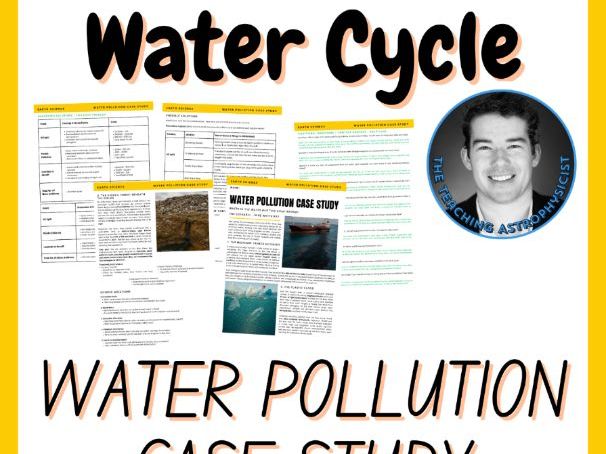

This water‑pollution case study is a ready‑made connection to the heart of Earth‑science instruction, weaving hydrology, human impact, and environmental engineering into one compelling narrative that middle‑ and high‑school students instantly relate to. Instead of abstract diagrams, learners trace real‑world oil slicks, plastic drifts, and nutrient leaks through every stage of the water cycle, then crunch authentic cost‑benefit data to design cleanup plans—an exercise that checks every NGSS three‑dimensional learning box in a single lesson. The resource arrives fully scaffolded: intriguing‑driven storyline, tiered question banks, editable version, and guiding questions so teachers can drop it into a 45‑minute period or expand it into a week‑long project without hours of prep. Students practice analyzing, investigating, and claim‑evidence‑reasoning writing while discovering how their daily choices ripple from watershed to ocean. In short, it transforms a textbook topic into a high‑engagement, standards‑aligned experience that lets Earth‑science teachers teach smarter, not harder. With this in mind, let’s engage with this excellent learning resource that makes a flexible addition to any lesson plan!
This Water Pollution Case Study 2 level set provides a truly engaging set of ways to engage students. This resource can help your students spark learning about he Water Cycle. For digital, you can provide a click and fill textbook version.
Ideal for reviewing or opening content for this topic, collaborative work, or independent work, it helps reinforce key topics while using a stroyline to help clean-up Blue Water Bay (my hypothetical bay) and the Water cycle. This ready-to-use resource is perfect for last-minute lesson plans, sub plans, or as an easy extension activity to get students looking at these systems in a different kind of way but through an engaging scenario.
THIS WATER POLLUTION CASE STUDY RESOURCE CAN BE USED SO MANY WAYS:
- Useful for substitute (sub) teaching
- To extend students
- To increase engagement & curiosity
- As an introduction, during unit or a fun roundout
- Great as a lesson filler when class goes too fast
- Get students to act as a group of science detectives to complete these and fix misconceptions
Something went wrong, please try again later.
This resource hasn't been reviewed yet
To ensure quality for our reviews, only customers who have purchased this resource can review it
to let us know if it violates our terms and conditions.
Our customer service team will review your report and will be in touch.